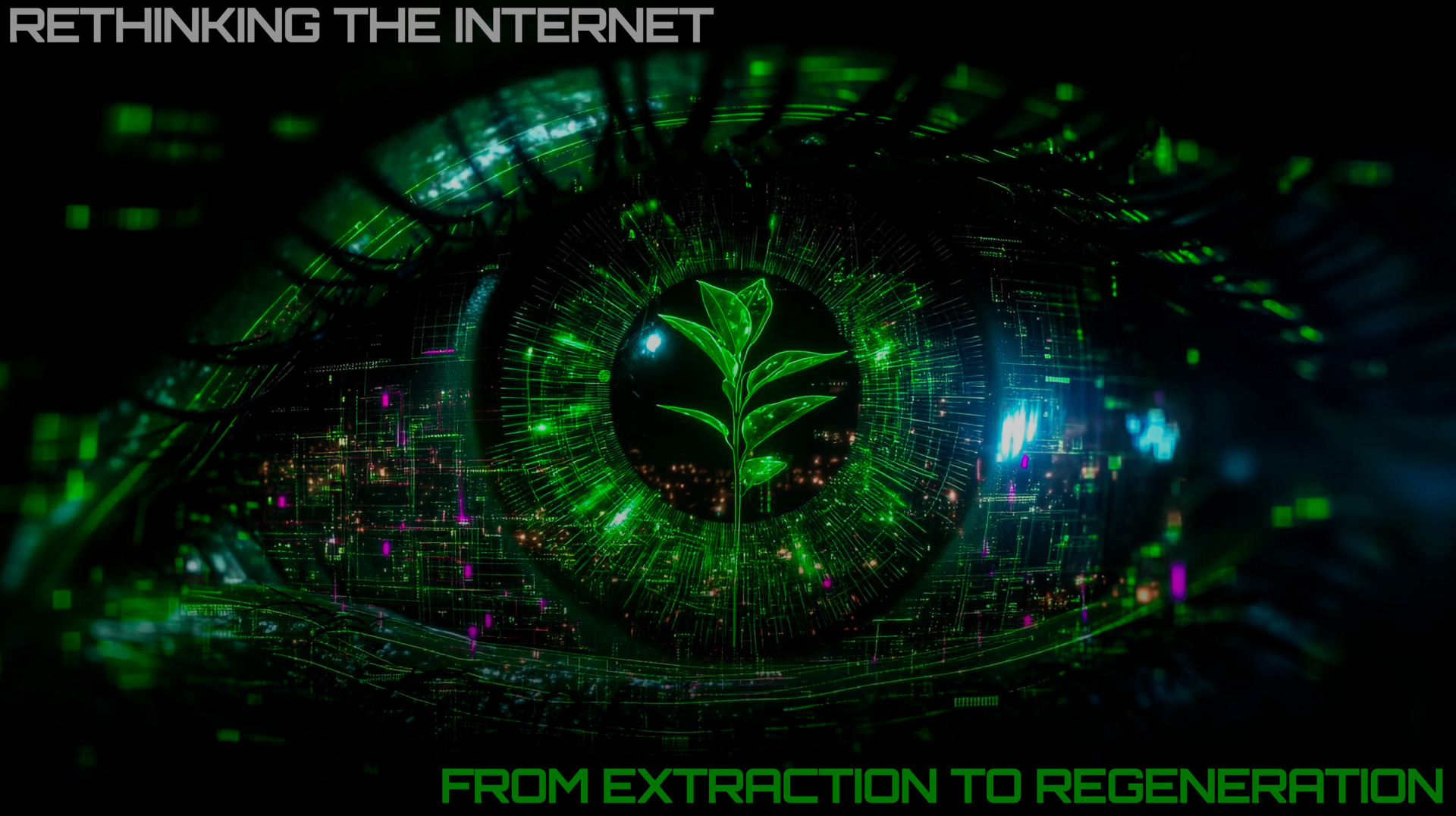Rethinking the Internet: From Extraction to Regeneration

The Zero Knowledge Network (ZKN) is building a privacy-first coordination layer for the Intelligence Era, a foundation where humans, machines, and communities can collaborate with trust and autonomy. This three-part series explores the core dimensions of that vision: from the philosophical roots of a regenerative internet, to the technical architecture powering it, and the path toward verifiable, sovereign coordination.
The Broken Digital Promise
The internet began as a promise of freedom: an open space for creativity, collaboration, and shared knowledge. But over time, that promise was quietly rewritten. Centralized platforms turned connection into a business model, collecting our data, predicting our behavior, and monetizing our attention.
We gained convenience but lost control. What was meant to empower individuals ended up feeding a few corporations. Privacy, once a default, became a privilege.
The Shift Toward a Regenerative Digital Commons
ZKNetwork (ZKN) emerges at a pivotal moment in the Intelligence Era - a time when AI, cryptography, and decentralized systems can finally come together to create secure, intentional coordination. Rather than continuing the extractive model that has defined the last decades of the internet, ZKN envisions a regenerative one: a system where every action strengthens the network itself, and where value flows back to the people and the system as a whole, not to intermediaries.
At its core, ZKN represents a rebalancing of collective agency through privacy, verification, and intention. It ensures that data belongs to its creator, coordination aligns with human will, and AI serves human agency, not the other way around. It’s technology designed to protect what matters most: ownership, autonomy, and trust.
This philosophy takes its cues from nature. ZKN’s design draws inspiration from mycelial networks and living ecosystems, systems that are decentralized, adaptive, and resilient by design. In nature, information and resources flow through intricate feedback loops that nourish rather than deplete. Each part strengthens the whole, creating a balance that allows everything to thrive together.
ZKN applies this same principle to the digital world. As these natural patterns take root in its architecture, networks can evolve beyond fragile centralized systems into regenerative digital ecosystems - like digital forests that grow stronger through participation, cooperation, and shared resilience.
From Attention to Intention
The last era of the internet was driven by attention - clicks, metrics, and dopamine loops that monetized distraction. Algorithms learned to capture our focus, turning engagement into a commodity and reducing human interaction to data points. It created an economy built on noise, not meaning.
The next era must be different. It must be driven by intention, by meaningful action verified through cryptography rather than captured by algorithms. ZKN’s design makes this shift possible. It transforms intent into a privacy-first, verifiable signal that enables coordination through alignment instead of manipulation.
In our model, value emerges from authenticity. The intention economy rewards genuine contribution, purposeful participation, and outcomes that serve the collective good rather than shallow engagement. It replaces the endless chase for clicks with collaboration grounded in trust and shared purpose, the foundation of a healthier, more human digital commons.
The Regenerative Promise
If the first internet-connected information and the second connected people, the next must connect intentions, creating a stronger network as more people align around shared purpose. This regenerative promise, powered by privacy and verified trust, represents not just a technological upgrade, but a moral one: rebuilding digital society to reflect collective prosperity over extraction.
What’s Next:
In Part II, we move from philosophy to architecture, exploring how ZKN makes privacy the fabric of coordination through zero-knowledge proofs, post-quantum mixnets, and a People’s DePIN model that rewards contribution instead of consumption, supporting ecosystem growth.
